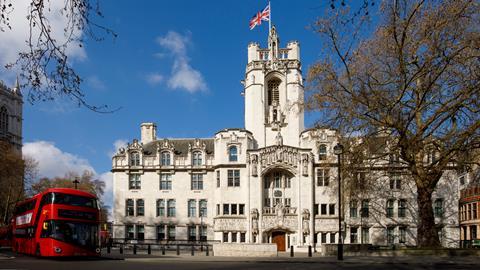Today’s Supreme Court judgment finding the Tate ‘liable in nuisance’ for its viewing platform which overlooks residents of luxury flats opposite will not lead to a flood of similar claims, specialist lawyers said.
The judgment which found, by a 3-2 majority, that Tate Modern’s viewing gallery was not ‘reasonable use’ of its land came as a surprise to some. Other firms predict that developers of non-residential buildings will need to ‘think more carefully’ about features that could potentially overlook others.
Jessica Dick, associate at Cripps, said: ‘Whilst today’s judgment won’t open the floodgates to cases around visual intrusion, we might see a trickle of similar cases. Today’s decision is likely to make developers, especially those working in cities like London, think more carefully about adding features like balconies and roof gardens on non-residential buildings, like office blocks, in case they overlook nearby residents.'
Claire Lamkin, partner in the real estate team at Kingsley Napley said that despite the ‘victory for the claimant flat owners’ and the judgment’s importance in clarifying nuisance under the law, the rare circumstances mean the ‘likelihood of all nuisance cases succeeding in the future remains slim’.
She added: ‘However, it will no doubt precipitate a wave of copycat cases where people feel a property development near them is highly intrusive. To that extent builders, architects, developers, town planners and policy makers will need to check their plans carefully from now on to minimise the risk of future similar litigation.’
Mathew Ditchburn, partner and head of real estate disputes at Hogan Lovells, said that the scope of the Supreme Court judgment ‘may well be limited to exceptional cases rather than normal neighbourly disputes.’
He added: ‘This widening of private nuisance to include overlooking someone else’s property seems at first to be ground-breaking, opening the floodgates to a raft of claims against nosey neighbours. It shouldn’t amount to a blanket “balcony ban”, but as ever we’ll need to watch out for the grey areas between what’s considered normal and what’s so extraordinary that it is legally actionable”.’
Adam Gross, a partner at Fladgate, said: ‘The key issue for developers on live and future projects, and building owners seeking to maximise on the profitability of the space in their building, is that visual intrusion can be a nuisance where the use of property is not common and ordinary. It is not a defence in those circumstances to say the neighbours should simply erect blinds or curtains to protect their privacy, or that the flats went up after.’
Legal director in Addleshaw Goddard’s real estate team Greg Simms said the outcome, which was ‘likely to worry developers’, was ‘difficult to imagine [being] widely replicated’.
He added: ‘The court even noted that there were only a few reported cases of nuisance resulting from visual intrusion. I don’t think this will change things materially, but it’s something developers will certainly need to keep in mind, particularly ensuring that their use of CCTV and other technology does not cause them to fall outside the scope of a common and ordinary use of their land which causes a nuisance to others.’
This article is now closed for comment.






























12 Readers' comments